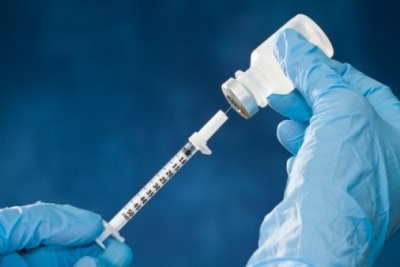Allergies are a major cause of various chronic diseases worldwide, and over the past three decades, their incidence has been steadily increasing – particularly in the developed world. There are various treatments available to get rid of an allergy. Still, Immunotherapy is the most effective one that helps in treating the causes of a specific allergy permanently, especially grass or pollen allergies. It is a preventive treatment given in the form of vaccines to people who have allergic reactions to grass pollens or dust mites. Precise immunotherapy with an integral allergen vaccine is a well-documented treatment to get protection from allergies.
Different vaccines usually contain integral allergens or allergens as their active ingredients for Immunotherapy.
Immunotherapy with a whole allergen vaccine is a well-documented treatment for allergic diseases. What is critical to understand when selecting a specific allergy vaccine is to know that not all allergy vaccines are created equally. The type of vaccine and the way active ingredients are used in production make a major difference in how effective the product treats the causes of the allergy.
Many terms relate to each other when it comes to Immunotherapy vaccines, such as Allergenicity, Immunogenicity, and Atingenicity. The first two terms have specific relevance concerning the dose required to achieve an immune response from the body to provide permanent relief from allergy symptoms.
Allergencity + Immunogenicity = Antigenicity
Allergenicity is the capacity of a substance to cause an allergy. Immunogenicity is the ability to induce a humoral and/or cell-mediated immune response. Antigenicity is the ability to specifically combine with the final products of the immune response (i.e., secreted antibodies and/or surface receptors on T cells). What pollen or dust-focused allergy vaccines effectively do is utilise small doses of the substance to produce an immune response for the patient to build their resistance against the specific cause of their allergies – effectively making them ‘immune.’
A Study was designed to compare the organic strength of four allergoid vaccines and three intact allergen vaccines. The idea behind allergoids is to decrease allergenicity while maintaining immunogenicity.
Allergenicity
Allergenicity is defined as the capacity of a particle, substance, or food to cause an allergy within an individual. It refers to the ability of an antigen to bring on an abnormal immune response. It is the capacity to bring allergen-specific IgE (immunoglobulin E) antibodies in inclined individuals. It is a property of being able to induce a Th2 response and a succeeding production of allergen-specific IgE antibodies. The allergenicity was investigated with IgE-inhibition and basophil activation assays.
Immunogenicity
Immunogenicity is the ability of a foreign substance, such as an antigen, to provoke an immune response in a human being’s or any animal’s body. Immunogenicity may be of two kinds: wanted or unwanted:
- Wanted Immunogenicity is generally related to vaccines, where the injection of an antigen aggravates an immune response against the pathogen, which helps protect the organism from future exposure.
- Unwanted Immunogenicity is an immune response by an organism against a therapeutic antigen. This reaction leads to the production of anti-drug-antibodies (ADAs), inactivating the therapeutic effects of the treatment and potentially inducing adverse effects.
When you experience such symptoms, this is called a histamine response, and in more scientific terms, a mediated or caused IgE response. This is a defense mechanism of the human body to ‘threats’ or, in the case of allergies, common molecules and proteins that we live with every day that our immune system misidentifies as ‘threats.’
Immunogenicity is the activation in the body that modifies allergic disease and then produces an immune response over time. Patients experience this via reduced symptoms. Allergy immunotherapy only works because of immunogenicity and is the crux of the efficacy of all allergy vaccines.
Unwanted Inmunotek Immunogenicity is an immune response by an organism against a therapeutic antigen. This reaction leads to the production of anti-drug-antibodies (ADAs), inactivating the therapeutic effects of the treatment and potentially inducing adverse effects. All in all, lower allergenicity observed for allergoids was naturally linked to reduced immunogenicity. Also, the immunological effect of allergoids didn’t suggest that these products contain a high dose of Alxoid immunological ingredients. Consequently, the effectiveness of these products is highly suspect, leading to their non-recognition by the FDA and other major international healthcare regulators and bodies.
Immunotherapy Dose
Allergen-specific immunotherapy is the treatment that is used to treat allergic rhinoconjunctivitis and asthma all over the world. The clinical efficiency of the most common methods, subcutaneous (SCIT) and sublingual (SLIT) immunotherapy, is recognized for respiratory allergy.
A 1998 WHO Consensus Report on Allergen Immunotherapy found a specific minimum dose necessary for treatment to be effective and maximum safe dosage. All in all, the dose depends upon the patient to patient. So, it should be taken on the doctor’s recommendation only.
Conclusion
All in all, lower allergenicity observed for allergoids was naturally linked to reduced immunogenicity. Also, the immunological effect of allergoids didn’t suggest that these products contain a high dose of immunological ingredients. Consequently, the effectiveness of these products is highly suspect, leading to their non-recognition by the FDA and other major international healthcare regulators and bodies.
Here is the study that shows conclusively that intact allergens work and allergoids do not.
